The state of Oklahoma, lying at the heart of America, holds a deep-rooted connection with significant events like the Civil War, the Indian Territory era, and the establishment of various military posts. The Oklahoma Historical Society, over the years, has committed itself to preserving the tales of these sentinel structures.
In this article, historic forts in Oklahoma, we will explore these forts that have told the story of bravery and protection of the people that settled, lived, and worked in this area of the United States.
10 Historic Forts in Oklahoma
| 1. Fort Gibson (1824) | 6. Fort Supply (1867) |
| 2. Fort Towson (1824) | 7. Fort Arbuckle (1851) |
| 3. Fort Washita (1842) | 8. Fort McCulloch (1862) |
| 4. Fort Sill (1869) | 9. Fort Coffee (1834) |
| 5. Fort Reno (1875) | 10. Camp Nichols (1865) |
1. Fort Gibson (1824)
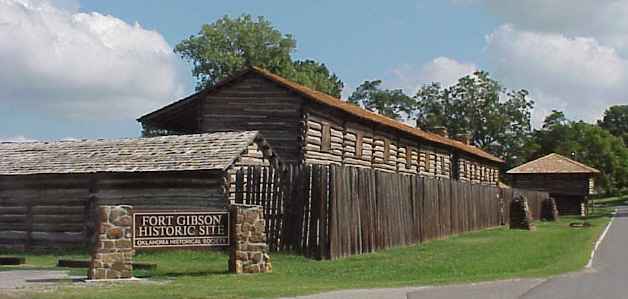
Established in April 1824, Cantonment Gibson was initially set up near the Arkansas River in present-day Oklahoma.
The site was chosen by Colonel Matthew Arbuckle, who led the 7th U.S. Infantry from Fort Smith, Arkansas. By 1832, the post was renamed Fort Gibson in honor of Colonel George Gibson, the Commissary General of Subsistence.
Key Role in Native American Relations
Fort Gibson was not just a military stronghold but central to the U.S. government’s interactions with various Native American tribes, particularly in the early 19th century. Here are some key events:
- Indian Removal (1830s): After the Indian Removal Act of 1830, Fort Gibson played a central role in receiving tribes forcibly relocated from their ancestral homelands in the southeastern U.S. The Cherokee, Creek, Seminole, Choctaw, and Chickasaw, known as the “Five Civilized Tribes,” passed through or settled near Fort Gibson during the infamous Trail of Tears.
- Seminole Wars: During the later stages of the Second Seminole War in the late 1830s and early 1840s, some Seminole prisoners of war were held at Fort Gibson.
U.S. Army Expeditions
Over the years, Fort Gibson served as a launching point or base for several U.S. Army expeditions:
- Expedition to the Plains (1834): Led by Colonel Henry Dodge, the Dragoon expedition set out from Fort Gibson to establish relations with the Comanche and other Plains tribes.
- Mexican-American War (1846-1848): Troops from Fort Gibson played a role in the U.S. campaign against Mexico. They left the fort and headed to the southwestern battlefronts.
Civil War and Later Use
During the Civil War, the fort was briefly abandoned in 1863 but was reoccupied by Union troops who used it as a base for operations in Indian Territory. After the war, the fort continued to play a role in the settlement of the West until it was decommissioned in 1890.
Today: Fort Gibson Historic Site
Thanks to preservation efforts, the history of Fort Gibson remains alive today. The Fort Gibson Historic Site, managed by the Oklahoma Historical Society, offers a glimpse into the past with its restored buildings and exhibits.
Visitors can explore the fort, learn about its history, and pay homage to the thousands of Native Americans affected by the policies it represented.
2. Fort Towson (1824)
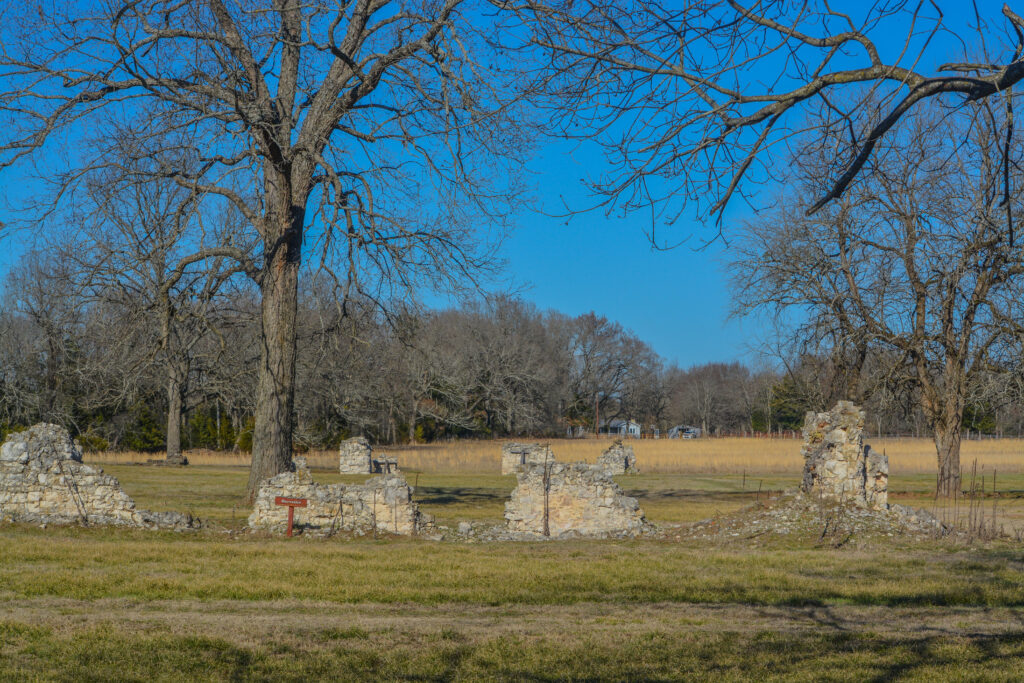
Established in 1824, Fort Towson was built as part of a larger initiative by the U.S. government to protect the country’s southwestern border.
Situated in Choctaw County, present-day Oklahoma, the fort played an instrumental role in the early relations between the U.S. government and Native American tribes, especially the Choctaw Nation.
Relocation of the Choctaw Tribe
One of the significant early roles of Fort Towson was to oversee the relocation of the Choctaw Tribe. After the Treaty of Dancing Rabbit Creek in 1830, the Choctaw were forcibly removed from their ancestral lands in Mississippi to Indian Territory. Fort Towson became a primary entry point and settlement for the relocated Choctaw.
Civil War Importance
Fort Towson’s strategic position made it a key site during the Civil War, especially for the Confederacy:
- Confederate Stronghold: Due to its location and infrastructure, the fort served as a stronghold and supply base for Confederate forces. It supported troops, housed military strategists, and acted as a logistical hub.
- Final Surrender: Fort Towson is famously known as where the last Confederate general, Brigadier General Stand Watie, surrendered his forces on June 23, 1865, more than two months after General Robert E. Lee’s surrender at Appomattox. Watie, a Cherokee chief and leader of the Cherokee Mounted Rifles, was the last Confederate general to lay down arms, ending Confederate resistance.
Post-Civil War and Decommissioning
After the Civil War, Fort Towson’s importance diminished. As Indian Territory changed and Oklahoma moved towards statehood, the fort became less critical for military purposes. It was eventually abandoned and fell into disrepair.
Fort Towson Today
Recognizing its significant place in American history, efforts were made to preserve Fort Towson. Today, the Fort Towson Historic Site, managed and maintained as a testament to its past, offers visitors a chance to learn about the fort’s history, the Civil War’s influence in the West, and the tragic story of the Choctaw relocation.
Restored buildings, interpretative exhibits, and guided tours deeply dive into this American history chapter.
3. Fort Washita (1842)
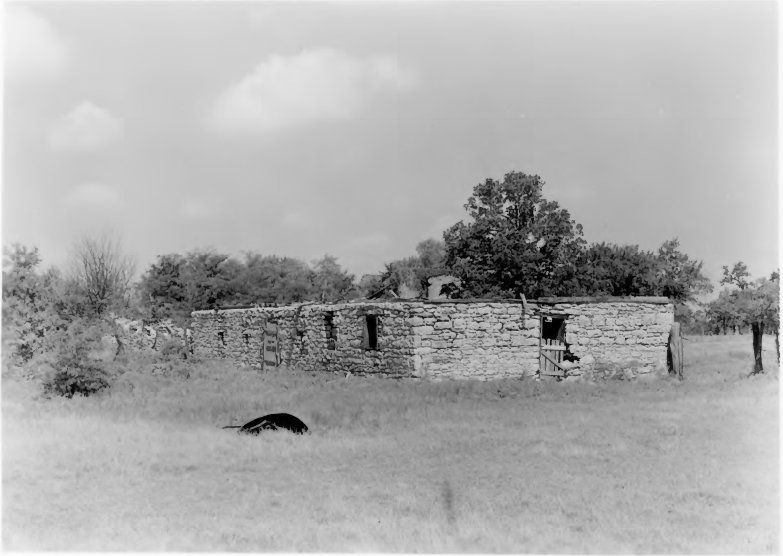
Founded in 1842, Fort Washita was initially established to anticipate potential threats during the Mexican-American War (1846-1848). Overlooking the Washita River, the fort’s strategic location was ideal for keeping a watchful eye on the southern borders and maintaining a strong U.S. presence.
Protection of the Chickasaw Nation
Beyond its initial purpose related to the Mexican-American War, the fort’s primary mission soon evolved. Having been forcibly relocated to the area from their southeastern ancestral lands, the Chickasaw Nation faced threats from the Plains tribes, particularly the Comanche and Kiowa.
Fort Washita served as a protective barrier to prevent skirmishes and promote peace between the Chickasaw and the Plains tribes. The fort’s troops often patrolled the region, ensuring the safety of Chickasaw settlements and deterring potential aggressors.
Civil War and Confederate Occupation
The winds of the Civil War brought new challenges to Fort Washita. Given its strategic position, the fort became a desirable asset for both the Union and the Confederacy:
- Confederate Stronghold: Shortly after the outbreak of the Civil War, Confederate forces occupied Fort Washita, recognizing its strategic significance. The fort became a vital supply and training base, reinforcing Confederate presence in the western theatre of the war.
- Union Threats: Union forces attempted to reclaim Fort Washita throughout the war, leading to skirmishes in the surrounding areas. The fort’s defenses held, remaining under Confederate control for most of the war.
Post-Civil War Era
After the Civil War, Fort Washita saw a decline in its military significance. Like many forts in the post-war era, it struggled to find a distinct purpose, and by the late 1860s, it was abandoned by military forces.
Fort Washita Historic Site
Modern-day efforts to preserve Fort Washita’s history have been successful. The Fort Washita Historic Site is a tribute to the fort’s multifaceted past, providing insight into its roles throughout various American conflicts and its relationship with Native American tribes.
Visitors can explore the restored structures, participate in reenactments, and immerse themselves in the rich tapestry of stories the fort offers.
4. Fort Sill (1869)

In the tumultuous years following the Civil War, the American westward expansion led to increased confrontations between settlers and Native American tribes.
Established in 1869 after skirmishes along the Red River, Fort Sill was crucial in the U.S. government’s efforts to control and pacify the Plains tribes.
Located in southwestern Oklahoma, it was strategically positioned to manage the activities of tribes such as the Comanche, Kiowa, and Apache.
Buffalo Soldiers and the 10th Cavalry
Among the many troops stationed at Fort Sill, the Buffalo Soldiers of the 10th Cavalry stand out for their significance.
These African American soldiers, earning their nickname “Buffalo Soldiers” from Native American tribes because of their fierce fighting abilities and curly hair resembling a buffalo’s mane, played a key role in the Indian Wars.
At Fort Sill, they not only engaged in military campaigns but also built roads, escorted mail, and contributed to the overall infrastructure and security of the region.
Transition to a Training Base
As the Indian Wars wound down and the 20th century dawned, Fort Sill’s role evolved. Instead of being just a frontier defense post, it transitioned into a hub for military training:
- Field Artillery Training: Recognizing the changing dynamics of warfare, Fort Sill became a premier location for field artillery training. The vast expanses of land provided ample space for drills, exercises, and artillery testing.
- World Wars and Beyond: Fort Sill’s training facilities expanded and developed throughout the 20th century. During both World Wars, the fort trained thousands of soldiers in artillery tactics. This tradition continued during the Korean War, the Vietnam War, and subsequent military engagements.
Recognition as a National Historic Landmark
Given its long-standing history and undeniable influence on American military development, Fort Sill was designated a National Historic Landmark in 1960. This recognition underscores the fort’s historical significance and ensures its preservation for future generations.
A Living Military Base and Historical Site
As many historic forts decommissioned, Fort Sill remains an active military base, continuing its legacy of field artillery training. The fort houses museums and historic sites alongside modern operations, allowing visitors to traverse its long and storied past.
5. Fort Reno (1875)
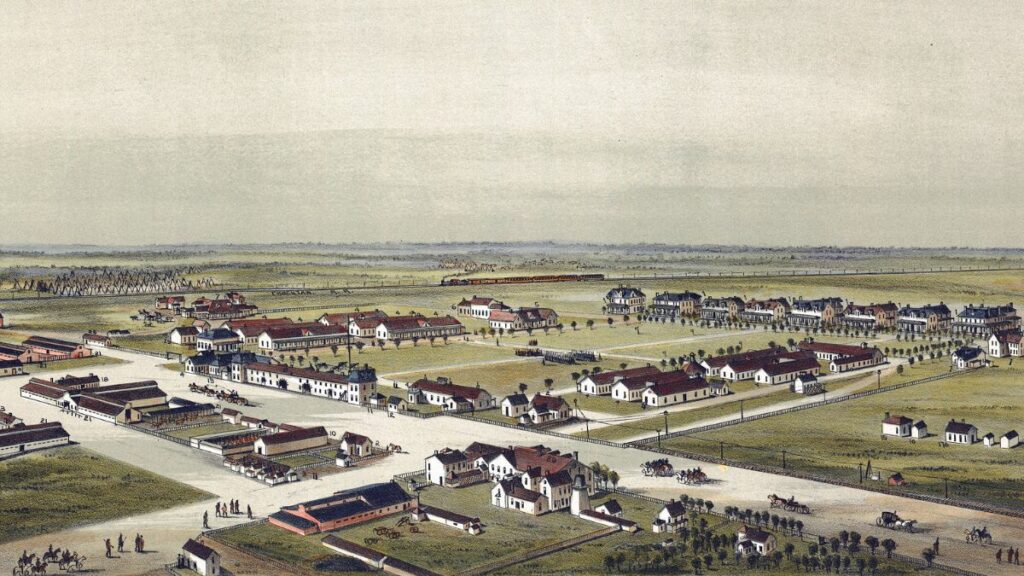
Amid the late 19th-century tensions, Fort Reno was established in 1875 in central Oklahoma. The fort’s primary motivation was the escalating tensions and confrontations with Plains Indians, especially the Cheyenne.
The U.S. government, keen on securing the region and safeguarding settlers and vital routes, recognized the strategic importance of a fortified position in the area.
Confrontations with the Cheyenne
Fort Reno played a pivotal role in the ongoing challenges with the Cheyenne tribe:
- Winter Campaign (1874-1875): The winter campaign, which saw significant military action against the Cheyenne and other tribes, highlighted the need for a stronghold like Fort Reno. The fort was a military operations base and a logistical and supply hub supporting various campaigns.
- Holding Point for Surrendered Tribes: As confrontations persisted, many tribes were forced into surrender. Fort Reno often served as a holding and processing point for these tribes, ensuring their relocation to assigned reservations.
- Mediation and Peacekeeping: While Fort Reno was undeniably a military post, it facilitated dialogues, treaties, and peacekeeping efforts between the U.S. government and various Native American tribes.
Post-Confrontation Era and New Roles
As the confrontations with Plains Indians gradually reduced, Fort Reno adapted to newer roles:
- Cavalry and Infantry Training: With its vast open spaces, the fort became a training ground for U.S. cavalry and infantry units, preparing them for various military engagements.
- German and Italian POW Camp: During World War II, Fort Reno transitioned to serve as a prisoner-of-war camp, holding German and Italian soldiers captured during the conflict.
Fort Reno Visitor Center
With its storied past, Fort Reno now boasts a visitor center as a gateway to its history. The center offers a comprehensive look into the fort’s foundation, its confrontations with the Cheyenne and other tribes, its role in the winter campaign, and its evolution through the 20th century.
Visitors can understand the fort’s challenges and transformations through exhibits, artifacts, and interactive displays.
6. Fort Supply (1867)
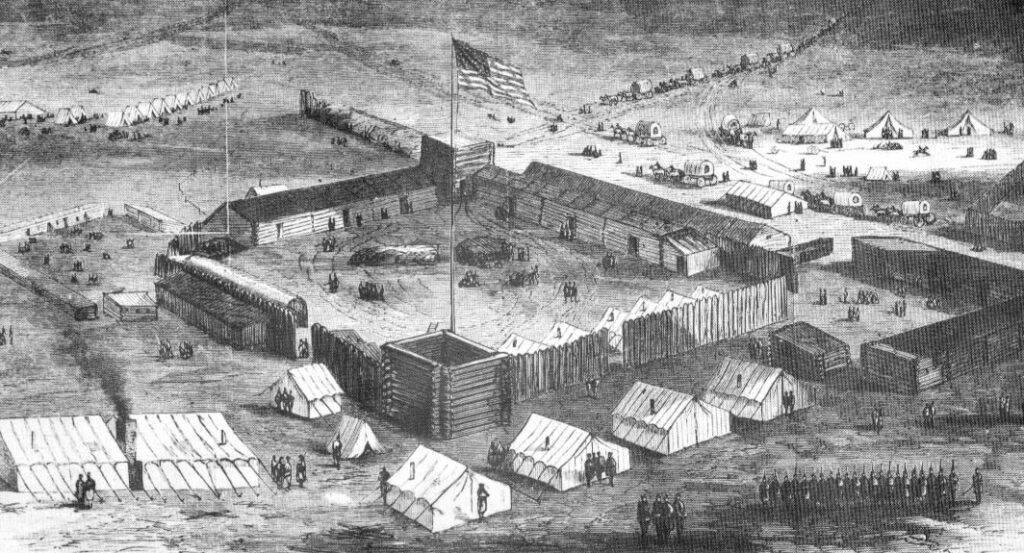
Amidst America’s westward expansion and the resulting challenges with Plains Indians, Fort Supply was founded in 1867.
Located in what is now western Oklahoma, its primary purpose was to support General Philip Sheridan’s winter campaign against the Native American tribes, especially the Cheyenne, Kiowa, and Comanche. The fort played a vital role as a supply base, hence its name, facilitating regional military operations.
Strategic Military Hub
During its early years, Fort Supply was more than just a supply depot:
- Base for Military Campaigns: Supporting operations such as the Red River War in 1874, the fort was a starting point for many military expeditions aiming to establish control over the Plains tribes.
- Surveillance and Patrols: Troops from Fort Supply regularly patrolled the region, monitoring tribal movements, ensuring the safety of settlers, and escorting supply trains and mail carriers.
- Treaty Enforcement: The fort played a role in ensuring that tribes adhered to the terms of various treaties. Soldiers stationed at Fort Supply would intervene if tribes ventured out of their designated reservations.
Post-Indian Wars and Transition
With the cessation of major military campaigns against Native American tribes by the late 19th century, Fort Supply began to see a shift in its role:
- Land Rush: As Oklahoma opened up to settlement with the Land Rush in the late 1880s and early 1890s, Fort Supply ensured that order was maintained and the rules were followed.
- Closure and Reuse: The military abandoned Fort Supply in 1894, marking the end of its original role. However, the fort’s infrastructure didn’t go unused. In 1908, the facility transitioned into the Western Oklahoma Hospital, serving patients with mental illnesses.
Fort Supply Historic Site
Recognizing the fort’s significance in Oklahoma’s and the nation’s history, efforts were made to preserve its legacy.
Today, the Fort Supply Historic Site is a testament to its past. Restored buildings, exhibits, and guided tours provide visitors with insights into frontier military life, the challenges of the Indian Wars, and the broader narrative of westward expansion.
7. Fort Arbuckle (1851)

In the wake of the increasing westward expansion and the relocation of various Native American tribes to what is now Oklahoma, Fort Arbuckle was established in 1851.
Located in the southern part of the territory, the fort was strategically positioned to manage potential conflicts between relocated tribes and to protect the region from potential incursions by the Plains tribes.
Peacekeeping and Tribal Relations
Fort Arbuckle’s primary mission was to maintain peace and stability in a region that was often rife with tensions:
- Intertribal Conflicts: One of the main objectives of Fort Arbuckle was to mediate and mitigate potential conflicts between various tribes that had been relocated to the Indian Territory. Tribes such as the Seminole, Creek, and Chickasaw, each with its customs and traditions, were now neighbors, and disagreements were not uncommon.
- Protection against Plains Tribes: Beyond intertribal dynamics, the fort also protected against possible aggressions by nomadic Plains tribes such as the Comanche and Kiowa.
- Promoting Settlement: Fort Arbuckle indirectly facilitated further westward expansion by ensuring stability and safety, as settlers felt more secure moving into or near the Indian Territory.
Civil War Era
With the onset of the Civil War, forts in the Indian Territory, including Fort Arbuckle, faced a period of uncertainty:
- Confederate Influence: Many tribes in the region, either through treaties or shared interests, sided with the Confederacy. Like other military installations in the area, Fort Arbuckle felt the weight of Confederate influence.
- Military Operations: The region saw its share of military actions and skirmishes during the Civil War, with the fort playing roles in various capacities.
Post-Civil War and Decommissioning
After the end of the Civil War, the U.S. government’s attention shifted, and many of the forts in the region, including Fort Arbuckle, began to lose their strategic significance. The fort was decommissioned in 1870, marking the end of its active military role.
Fort Arbuckle Today
While Fort Arbuckle no longer stands as it did in its prime, its legacy is not forgotten. The site is recognized for its historical importance, with markers and remnants offering a glimpse into the past. Historians and enthusiasts visit the area to learn more about the challenges and dynamics of the Indian Territory during the mid-19th century.
8. Fort McCulloch (1862)
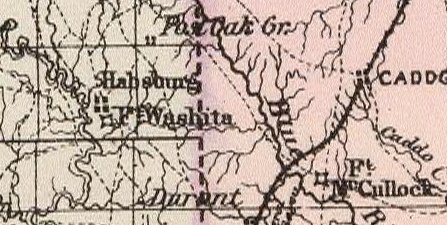
Amidst the chaos and conflict of the American Civil War, Fort McCulloch was established in 1862 by Confederate Brigadier General Albert Pike.
In present-day Bryan County, Oklahoma, the fort was strategically positioned within the Choctaw Nation in the Indian Territory. Its location on the Blue River’s high banks made it a naturally defendable position.
The Civil War and Confederate Alliances
The Indian Territory was a tumultuous region during the Civil War, with Native American tribes forging alliances based on shared interests and pressures:
- Alliance with the Confederacy: Many of the Five Civilized Tribes, including the Choctaw and Chickasaw, formed alliances with the Confederate States, largely due to pre-war relationships, promises of an Indian state if the Confederacy won, and shared economic interests like slavery.
- Fort McCulloch’s Role: As the largest Confederate fort in the Indian Territory, Fort McCulloch served as a base for Confederate operations in the region. It was a haven for Confederate troops, offering protection and acting as a logistics and supply center.
- Protection against Union Incursions: The fort was primarily defensive, aimed at preventing Union forces from penetrating the region and ensuring Confederate control over the Indian Territory.
Post-Civil War Era and Abandonment
As the Civil War neared its end and the Confederacy’s situation became increasingly dire, Fort McCulloch’s significance diminished:
- Lack of Major Battles: Fort McCulloch never saw a significant battle during the Civil War despite its strategic importance. Its strong defenses and remote location deterred potential Union assaults.
- Abandonment: With the Confederacy’s surrender in 1865, Fort McCulloch was abandoned. Its structures, mainly made of earth and timber, eventually deteriorated due to the passage of time and the elements.
Today
While no original structures from Fort McCulloch remain intact today, the site holds historical significance. It is a testament to the complex dynamics of the Civil War era in the Indian Territory, where Native American allegiances, strategic military objectives, and broader geopolitical contexts converged.
Markers and commemorative events ensure Fort McCulloch’s legacy in Oklahoma’s history is remembered and respected. The fort’s history offers a window into a chapter of American history where national conflict and Native American alliances intertwine unexpectedly.
9. Fort Coffee (1834)
In 1834, on a bluff overlooking the Arkansas River, Fort Coffee was established in what would later become Oklahoma.
Initially, the fort was set up as a military post by the U.S. Army to maintain peace in the region and to manage the growing westward movement of settlers and the forced relocation of Native American tribes, particularly during the Trail of Tears.
Role in the Indian Removal
The 1830s witnessed the forced migration of the Five Civilized Tribes (Cherokee, Choctaw, Creek, Chickasaw, and Seminole) from their ancestral lands in the southeastern U.S. to the Indian Territory:
- Trail of Tears: Fort Coffee was crucial during this tragic period. As thousands of Native Americans journeyed westward, facing hardship and death, the fort acted as a waypoint where they could rest, and receive supplies, and medical care.
- Regulation and Peacekeeping: Beyond the Trail of Tears, the fort’s soldiers were tasked with preventing potential conflicts between the relocated tribes and ensuring that the terms of various removal treaties were upheld.
From Military to Missionary Use
By the early 1840s, the original purpose of Fort Coffee began to diminish:
- Abandonment as a Military Post: With the major phases of the Indian Removal completed and relative peace reigning in the region, the U.S. Army abandoned Fort Coffee in 1842.
- Methodist Boys’ School: Soon after the Army’s departure, the Fort Coffee Academy for Boys, a Methodist-run school, was established on the grounds of the former fort. This institution aimed to educate Native American boys, primarily from the Choctaw Nation.
Endings and Modern Commemoration
The fort and school didn’t last long beyond the 1840s. In 1846, due to mounting tensions leading to the Mexican-American War and fears that the fort’s location might be vulnerable to attack, the school was relocated to a more secure site.
Today, while the original structures of Fort Coffee no longer stand, the site remains a significant historical landmark. Plaques and markers give visitors a glimpse into the fort’s varied history, from military endeavors to educational pursuits.
10. Camp Nichols (1865)
Established in 1865, during the concluding months of the American Civil War, Camp Nichols was erected in the western part of present-day Oklahoma.
Its primary mission was to protect the Santa Fe Trail, a crucial trade route that connected the eastern United States to the southwestern territories, from raids and attacks, particularly by the Kiowa and Comanche tribes.
Civil War Dynamics in the West
While the primary theaters of the Civil War were in the East, the Western territories also experienced their share of conflict:
- Protecting the Santa Fe Trail: By 1865, Confederate power in the region had diminished, but the threat from Native American tribes, especially those allied against the U.S. government, remained significant. Camp Nichols, located near the Cimarron River, was strategically positioned to protect wagon trains traveling the Santa Fe Trail.
- Alliance with the Navajo: The fort was constructed with the aid of Navajo scouts led by famed Navajo leader Manuelito. They assisted Kit Carson, and the U.S. Army established this outpost, reflecting the region’s intricate web of alliances and enmities.
Short-lived Operation and Legacy
Despite its strategic importance, Camp Nichols had a relatively short operational life:
- Abandonment: The U.S. military abandoned the camp only months after its establishment. The outpost’s significance quickly waned with the Civil War’s end and shifting geopolitical priorities.
- Historical Recognition: While Camp Nichols was briefly operational, safeguarding the Santa Fe Trail during a crucial period ensures its place in history. Today, the site is marked for its historical significance, offering a window into the complexities of war and alliances in the American West.
Related: 10 Historic Forts in Pennsylvania
Life in the Oklahoma Forts
The historic forts scattered across Oklahoma were more than just strategic military outposts; they were bustling microcosms of daily life, reflecting the broader transformations happening in America’s western frontier.
Daily Routine and Military Discipline
A structured daily routine characterized life in the forts. The day typically began with a bugle call at dawn, signaling the troops to rise and start their duties.
Mornings usually involved physical training, weapon drills, and maintenance tasks, ensuring the fort was always ready for potential threats. The rigorous discipline was vital, especially with the U.S. Army taking on significant roles in maintaining peace and fulfilling treaty obligations.
Cultural Interactions with American Indians
While the primary purpose of these forts was military defense, they often became melting pots of cultural interactions. Soldiers at these forts frequently interacted with surrounding American Indian tribes.
These interactions ranged from trade agreements to negotiations over land and resources. Over time, the soldiers developed a deeper understanding and appreciation of the native cultures, leading to shared festivities, stories, and sometimes intermarriages.
Economic Activity at Trading Posts
Trading posts within or near the forts played a crucial role in the local economy. These establishments were places where soldiers, American Indians, and white settlers converged to barter and trade.
Items such as furs, weapons, food supplies, native artifacts, and information were exchanged. The economic dynamics at these trading posts often influenced broader regional trade patterns.
Impact on the Surrounding Area
The presence of these forts often led to the growth of settlements in their vicinity. As trading posts flourished, they attracted settlers looking for economic opportunities.
Over time, these settlements grew, establishing schools, churches, and other essential institutions. The forts, indirectly, shaped the socio-economic landscape of the Oklahoma territory.
Related: Military History in The Making: 5 Army Forts in Oklahoma
Conclusion – Historic Forts in Oklahoma
The tapestry of Oklahoma’s history, with its forts, military posts, and historic sites, provides a window into the past. These structures, preserved diligently, serve as a reminder of the state’s role in shaping the broader narrative of American history.
If you have visited any of these forts in Oklahoma, we would love to hear about your experience in the comments section below.

Cory is a website owner and content creator who enjoys fishing, history, coin collecting, and sports, among other hobbies. He is a husband and father of four.
Romans 15:4 For whatever was written in former days was written for our instruction, that through endurance and through the encouragement of the Scriptures we might have hope.

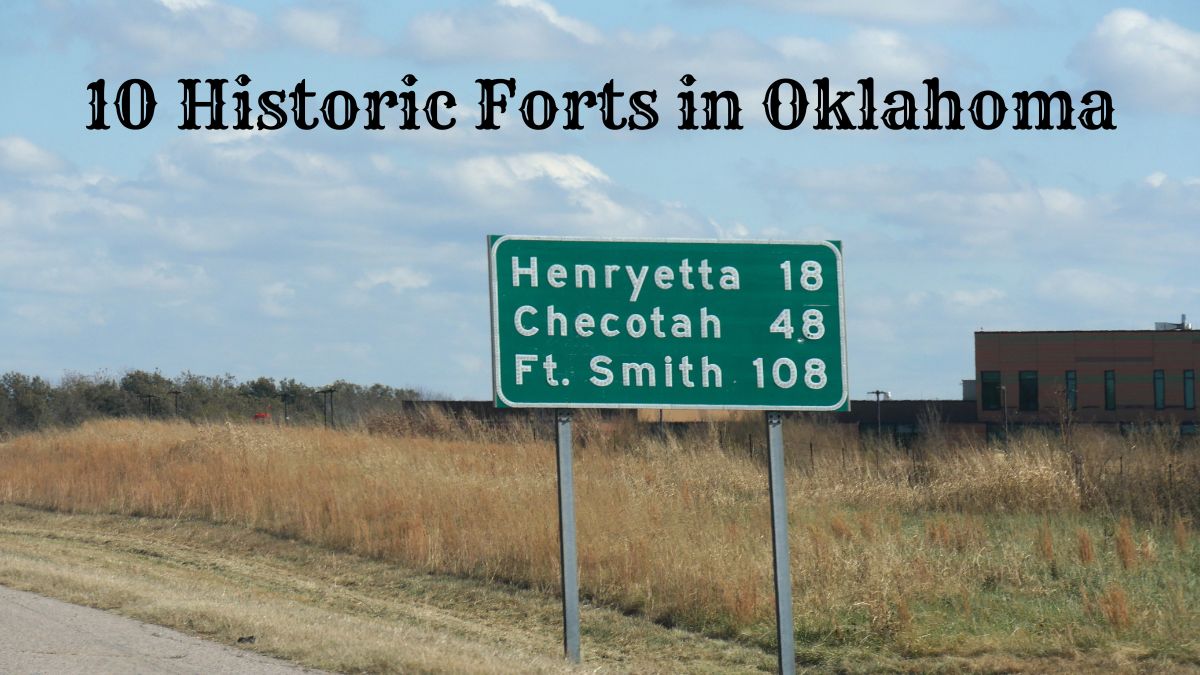
I was born and raised in Oklahoma. In grade school, there were many Indian children. I did not think anything about it because kids I played with at home and school were often Indian. However at school, I did see that the Indian children were spanked more and harder than white children when it came to punishment. When there was tribal events and the public was invited, we often went to see it. The feathers of the Chief were so beautiful.
Thank you for sharing your first hand experience.